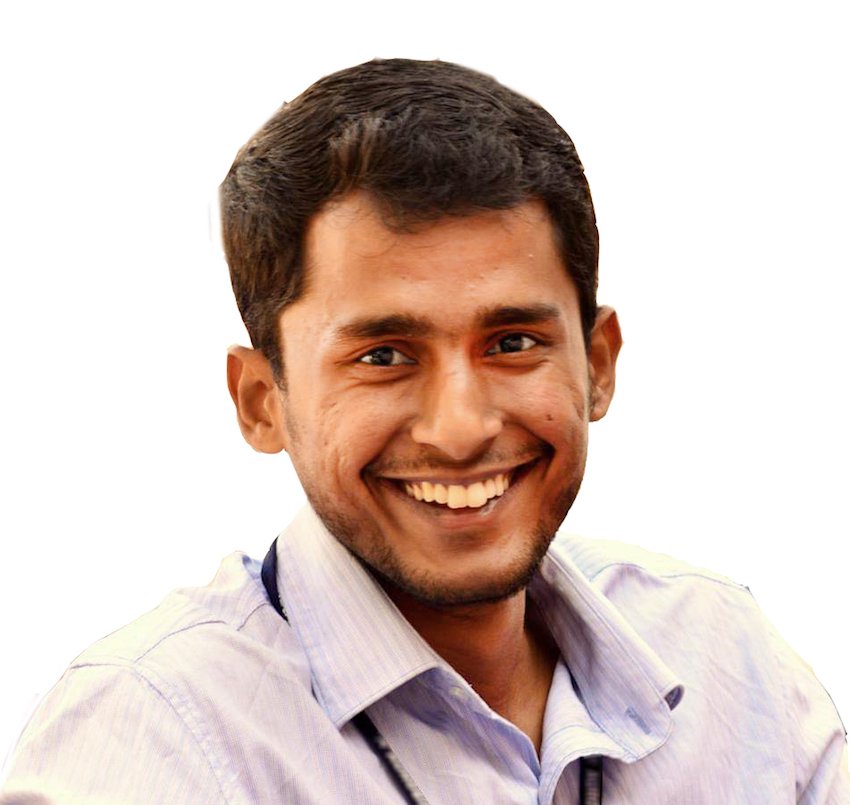India lags behind neighbors on key health measures
24 April 2012 | News | By BioSpectrum Bureau
Bangalore: Indians are living longer lives, but illness and disability of a very high order and relatively early death remain severe health care challenges. What should cause concern to health care planners and providers is that India appears to be lagging behind many of its South Asian neighbours as well as China on key parameters of health.
These are some of the findings from the Global Burden of Diseases, Injuries, and Risk Factors 2010 Study (GBD 2010), a collaborative project led by the Institute for Health Metrics and Evaluation (IHME) at the University of Washington. Country-specific findings, including for India, will be announced at the Bill & Melinda Gates Foundation in Seattle, by IHME Director Dr Christopher Murray and Foundation Co-chair and Trustee Bill Gates.
These findings detail the causes of death and disability - across age groups and genders - for 187 countries around the world. GBD 2010 encompasses researchers from 303 institutions in 50 countries. The work, which generated 1 billion estimates for health challenges large and small, was funded by the Bill & Melinda Gates Foundation.
In addition, IHME is releasing a brief summary of the findings for all 187 countries as well as a report on GBD methods and findings called The Global Burden of Disease: Generating Evidence, Guiding Policy.
"Our goal is to help governments and citizens make well-informed decisions about health policies and investments by arming them with information that is up-to-date, comprehensive, and accurate," said IHME Director Dr Christopher Murray. "With these new ways of making the data understandable, people everywhere for the first time can see the incredible progress being made in health and the daunting challenges that remain."
Indians are living longer for sure. Life expectancy at birth was 58.3 in 1990; it went up to 65.2 in 2010. However, most of India's neighbours were ahead on this measure in 1990, when life expectancy was 58.8 years for Nepal, 58.8 for Bhutan, 58.9 for Bangladesh, 62.3 for Pakistan, 69.3 for China, and 72.3 for Sri Lanka. All of these countries remained ahead of India in 2010. Life expectancy at birth in 2010 was 65.7 years for Pakistan, 69.0 for Bangladesh, 69.2 for Nepal, 69.4 for Bhutan, 75.5 for Sri Lanka, and 75.7 for China.
In terms of age-standardised death rate, per 100,000 population, India ranked 155 out of 187 countries in 1990. Bangladesh (at 143), Nepal (at 142), Bhutan (at 141), Pakistan (at 123), China (at 92), and Sri Lanka (at 45), were all ahead of it.
Between 1990 and 2010, there was significant improvement in India in terms of death rates. The number of deaths per 100,000 had come down, in 20 years, from 1,447.43 to 1,096.92. Its neighbours had a mixed record, but they remained ahead. India was ranked 139 out 187 countries in terms of death rate in 2010. Pakistan was ranked 127, Bangladesh 113, Nepal 108, Bhutan 107, Sri Lanka 68, and China 63. All had lower death rates than India.
Much of the illness and death in India is caused by a short list of ailments. GBD researchers examined more than 300 diseases, injuries, and risk factors and found that a limited number of distinct causes account for the bulk of the Indian health burden, measured as the number of years lost to disability and premature death. The top cause of death in India, as measured in 2010, was ischaemic heart disease, followed by chronic obstructive pulmonary disease, stroke, diarrhoeal diseases, lower respiratory infections, tuberculosis, preterm birth complications, self-harm, road injury, and diabetes.
The presence of road injury in the list of top causes of death is not surprising, given that Indian roads are among the most dangerous in the world with more deaths due to road accidents recorded here than in any other country.
India has had great success in driving down the number of young children who die of communicable diseases. The top causes of death of children ages 1 to 4 in 1990 were diarrhoeal disease, lower respiratory infection, measles, malnutrition, and meningitis. These top five held relatively steady in terms of rankings over the next 20 years, but the number of deaths due to these ailments decreased by more than 60% for each illness. In terms of sheer numbers, more than 800,000 Indian children ages 1 to 4 died in 1990. By 2010, that number was down to 300,000. India has made specific progress in tackling diarrhoeal diseases. No longer the nation's number one killer; in 2010, it was number four.
Indian women are suffering from other distinct health threats. Suicide rates for women ages 15 to 49 are on the rise; in 1990, deaths of young Indian women attributable to self-harm was under 5%, and by 2010 it had reached nearly 10%. Interpersonal violence - usually men assaulting their female partners - also accounts for a rapidly growing portion of health burden for young women in India.
Noncommunicable diseases and injuries are creating more strains on health as communicable diseases and maternal health problems become less threatening. Illnesses such as diarrhoeal disease, lower respiratory infections, tuberculosis, preterm birth complications, malnutrition and neonatal sepsis, and neonatal encephalopathy are all decreasing in terms of rankings and number of lives that they claim each year. Ischaemic heart disease is showing an opposite pattern, growing in terms of number of deaths and relative rankings of diseases. Heart disease was the number four killer of Indians in 1990; it was number one in 2010. The rise of stroke as a cause of death is a matter of concern, as is an increasing number of suicides.
In terms of risk factors for death, four of the top five in 1990 remain in the top five risk factors in 2010, though the rankings have changed. In 1990, the top five risk factors were household air pollution from solid fuels, dietary risk factors, childhood underweight, smoking, including second-hand smoking, and high blood pressure. In 2010, dietary risk factors became number one, followed by high blood pressure, household air pollution from solid fuels, tobacco smoking, including second-hand smoking, and ambient particulate matter pollution. The impact of malnutrition has been greatly reduced.
"Over the past two decades risk factors leading to the major disease conditions in India have changed significantly, which has crucial implications for how we should plan to improve population health in India," explained Lalit Dandona, Distinguished Research Professor, Public Health Foundation of India and Professor of Global Health at IHME. "The relative contribution of risk factors associated with lifestyle changes - higher consumption of unhealthy foods, physical inactivity, blood pressure, blood glucose, and alcohol use - to the disease burden has almost doubled. In addition, tobacco use and air pollution continue to be major risk factors. Effective inter-sectoral strategies to address these risk factors are needed for improving health across the population in India."
Evidently, while much had changed in 20 years, a lot remained the same - an observation that applies across the board to life in India. The rise of ambient air pollution and hypertension as risk factors can be linked to increased urbanisation and poor lifestyle choices. On the other hand, remarkably, childhood underweight has been pushed down from being the number three risk factor for death in 1990 to number 11 in 2010. And for all the efforts, across platforms, to fight smoking it remained the number four risk factor for death, the very same slot it held 20 years earlier.
In terms of disability-adjusted life years (DALYs), which have been described as a measure of overall disease burden, expressed as the number of years lost due to ill health, disability, or early death, the top five causes in 1990 were diarrhoeal diseases, lower respiratory infections, preterm birth complications, chronic obstructive pulmonary disease, and tuberculosis. But in 2010, the top five causes for DALYs were preterm birth, diarrhoeal diseases, lower respiratory infections, ischaemic heart disease, and chronic obstructive pulmonary disease.
"India is facing a difficult set of health challenges. While we have made substantial progress against some diseases and hunger, we still have significant work to do in combating major infectious diseases such as diarrhoea, pneumonia, and tuberculosis, as well as diseases of the newborns. At the same time, we must prepare to grapple with the dangerously increasing burden of noncommunicable conditions like heart disease, stroke, diabetes, obstructive lung disease, depression, and road traffic injuries. Making lasting health gains in the face of this variety of challenges will require wise planning for universal health coverage in India," said Dr. Srinath Reddy, President of the Public Health Foundation of India.
The release of the country-specific data visualizations follow the Dec. 15 publication of GBD global and regional findings in The Lancet, the first time the journal has dedicated an entire triple issue to one study. The seven scientific papers and accompanying commentaries provide a new platform for assessing the world's biggest health challenges, and then finding the best ways to address them.
GBD 2010 provides the evidence for a range of new research projects and targeted policymaking in India and beyond. It also opens the opportunity for countries to conduct detailed burden studies of their own populations.
The Institute for Health Metrics and Evaluation (IHME) is an independent global health research center at the University of Washington that provides rigorous and comparable measurement of the world's most important health problems and evaluates the strategies used to address them. IHME makes this information freely available so that policymakers have the evidence they need to make informed decisions about how to allocate resources to best improve population health.












